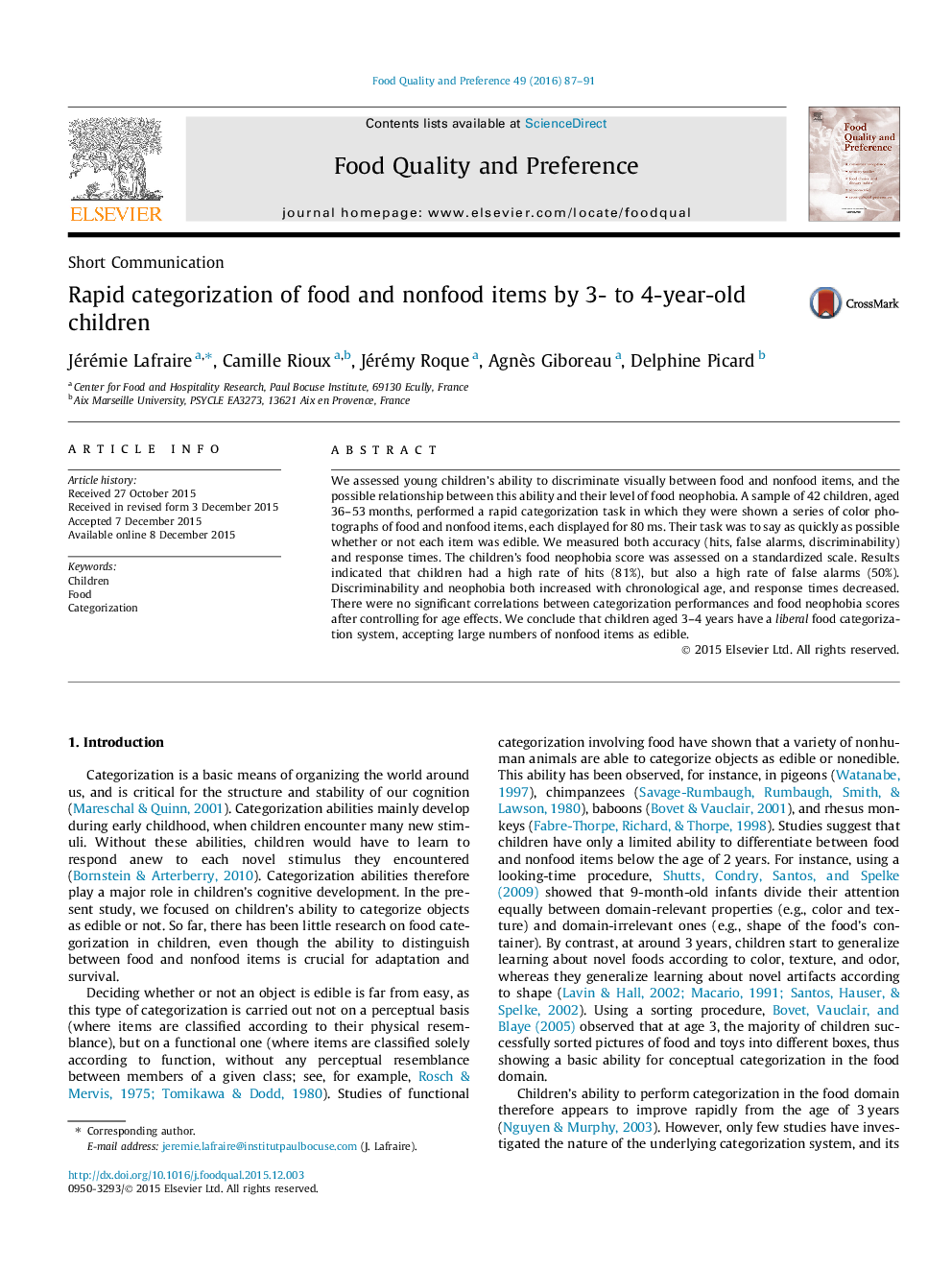| Article ID | Journal | Published Year | Pages | File Type |
|---|---|---|---|---|
| 6261254 | Food Quality and Preference | 2016 | 5 Pages |
â¢Children were able to discriminate between food and nonfood items quite efficiently, even with extremely brief stimulus presentation times.â¢The rapid categorization paradigm can be successfully applied to young children.â¢Children are rather liberal in their decision criterion regarding edibility.â¢Young girls had better food discrimination abilities than boys.â¢Investigations into the developmental characteristics of children's food categorization system are now required.
We assessed young children's ability to discriminate visually between food and nonfood items, and the possible relationship between this ability and their level of food neophobia. A sample of 42 children, aged 36-53Â months, performed a rapid categorization task in which they were shown a series of color photographs of food and nonfood items, each displayed for 80Â ms. Their task was to say as quickly as possible whether or not each item was edible. We measured both accuracy (hits, false alarms, discriminability) and response times. The children's food neophobia score was assessed on a standardized scale. Results indicated that children had a high rate of hits (81%), but also a high rate of false alarms (50%). Discriminability and neophobia both increased with chronological age, and response times decreased. There were no significant correlations between categorization performances and food neophobia scores after controlling for age effects. We conclude that children aged 3-4Â years have a liberal food categorization system, accepting large numbers of nonfood items as edible.
